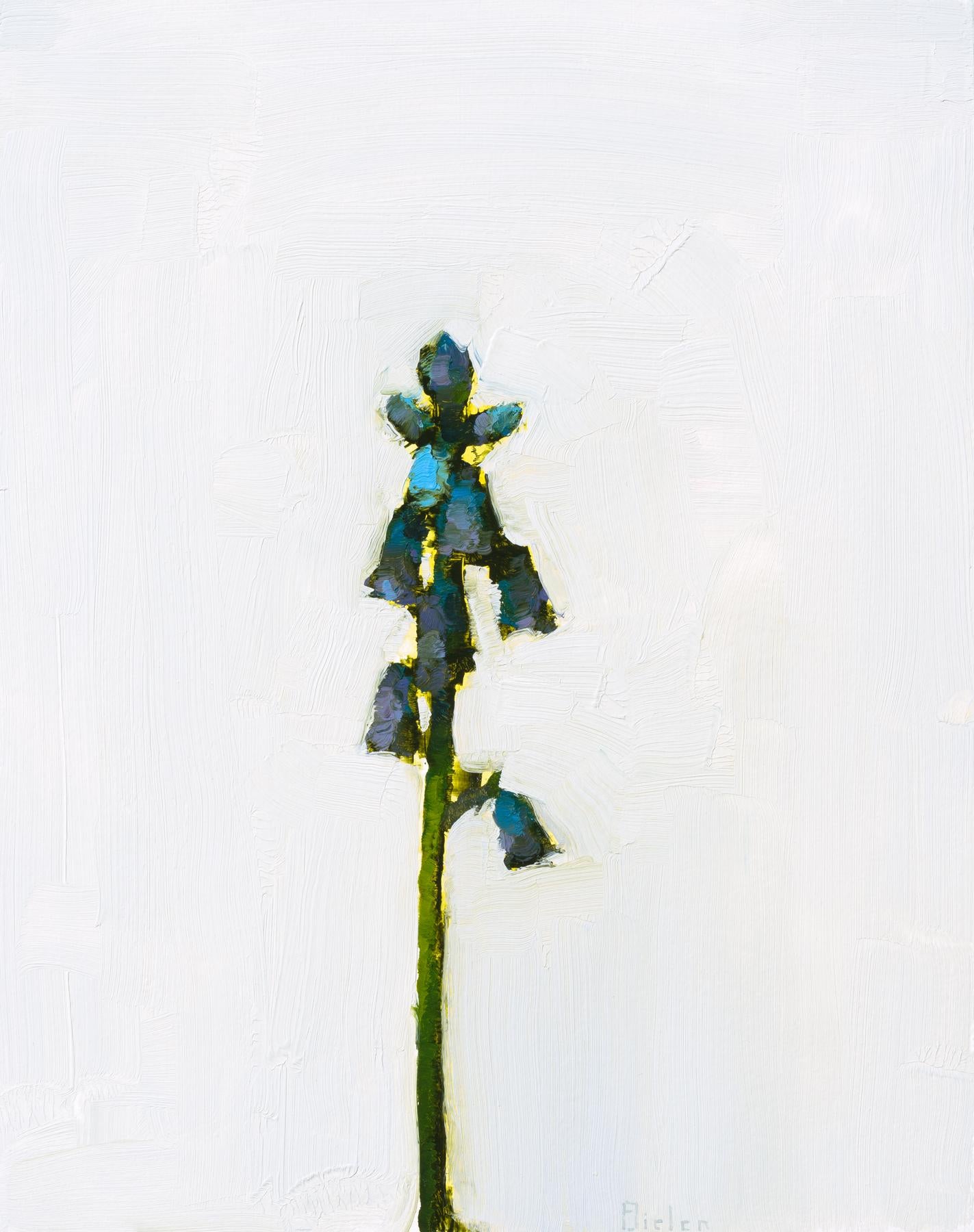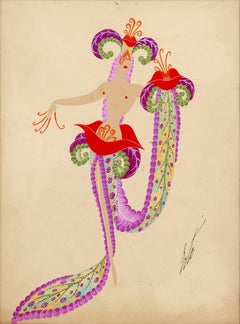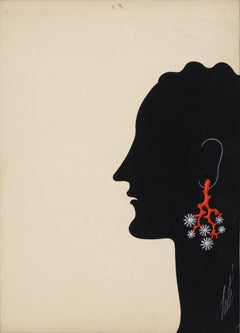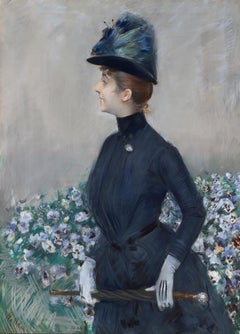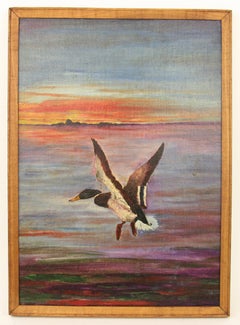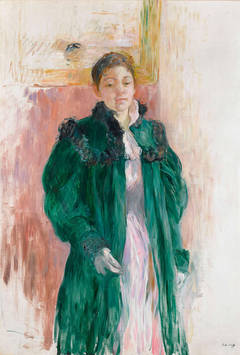
Girl in a Green Coat
View Similar Items
Want more images or videos?
Request additional images or videos from the seller
1 of 6
Berthe MorisotGirl in a Green Coat
$2,685,000List Price
About the Item
- Creator:Berthe Morisot (1841 - 1895, French)
- Dimensions:Height: 55 in (139.7 cm)Width: 41 in (104.14 cm)
- Condition:
- Gallery Location:New Orleans, LA
- Reference Number:Seller: 30-15931stDibs: LU186111456
About the Seller
5.0
Vetted Professional Seller
Every seller passes strict standards for authenticity and reliability
Established in 1912
1stDibs seller since 2013
17 sales on 1stDibs
Typical response time: 10 hours
Authenticity Guarantee
In the unlikely event there’s an issue with an item’s authenticity, contact us within 1 year for a full refund. DetailsMoney-Back Guarantee
If your item is not as described, is damaged in transit, or does not arrive, contact us within 7 days for a full refund. Details24-Hour Cancellation
You have a 24-hour grace period in which to reconsider your purchase, with no questions asked.Vetted Professional Sellers
Our world-class sellers must adhere to strict standards for service and quality, maintaining the integrity of our listings.Price-Match Guarantee
If you find that a seller listed the same item for a lower price elsewhere, we’ll match it.Trusted Global Delivery
Our best-in-class carrier network provides specialized shipping options worldwide, including custom delivery.More From This Seller
View AllLes fleurs du mal by Erté
By Erte - Romain de Tirtoff
Located in New Orleans, LA
Erté (Romain de Tirtoff)
1892-1990 Russian-French
Fleurs du Mal(The Flowers of Evil)
Signed "Erté" (lower right)
Inscribed 114.6 (en verso)
Gouache on paper
Captivating and vibrant, this colorful gouache entitledFleurs du Mal showcases Erté's masterful creativity and keen eye. Inspired by Les Fleurs du mal, the famed volume of poems by French writer Charles Baudelaire, this ensemble marries light purple and green floral motifs with the suggestive form of red lips poised for a smooch. This daring yet feminine appearance encapsulates the Art Deco allure for which the artist's creations are cherished. The sophisticated arrangement emanates the fundamental richness and theatricality that can only be accomplished by Erté, often hailed as the "Father of Art Deco."
First published in 1857, Baudelaire's Les Fleurs du mal was controversial for its suggestive content and themes of decadence and eroticism. The volume provided a wealth of inspiration for Erté and he drew from several themes to create original fashion sketches...
Category
20th Century Art Deco Figurative Drawings and Watercolors
Materials
Paper, Gouache
Gysie by Erté
By Erte - Romain de Tirtoff
Located in New Orleans, LA
Erté (Romain de Tirtoff)
1892-1990 Russian-French
Gysie
Signed "Erté"(lower right)
Inscribed "No. 5442" (en verso)
Gouache on paper
An enthralling pink gown by Erté is namedGysie,...
Category
20th Century Art Deco Figurative Drawings and Watercolors
Materials
Paper, Gouache
Boucles D'oreilles En Corail By Erté
By Erte - Romain de Tirtoff
Located in New Orleans, LA
Erté (Romain de Tirtoff)
1892-1990 Russian-French
Boucles d'oreilles en corail
(Coral Earrings)
Signed “Erté” (lower right)
Inscribed “n°3544 / Boucles d'oreilles en corail et tub...
Category
20th Century Art Deco Figurative Drawings and Watercolors
Materials
Paper, Gouache
La femme aux fleurs (Portrait de Mathilde See)
By Paul César Helleu
Located in New Orleans, LA
Paul César Helleu is regarded among the most sought-after society portraitists of his era, and his Belle Époque works rival those of his contemporaries John Singer Sargent and Giovanni Boldini. He is best remembered for capturing the era's most beautiful socialites, including Consuelo Vanderbilt, the Duchess of Marlborough, the Comtesse de Loriol Chandieu and the Comtesse Mathieu de Noailles, among others. This work, however, stands out in that it captures the charming likeness of one of his art world cohorts, Mathilde See, a Parisian-born decorator and painter of floral still lifes. She is the essence of the modern woman, captured in her fashionable dress as she strolls along the flower-lined streets of Paris.
Commanding in size, Portrait de Mathilde See fully displays Helleu's mastery over the medium of pastel. The muted palette of greys and blues is typical of the artist, bringing a harmony and cohesiveness to the composition. Furthermore, Helleu cleverly alludes to See's own artistic output with a backdrop of vibrant floral blooms, enlivening the canvas and complementing the greens and blues of the peacock feather adorning her hat.
The portrait is all the more significant thanks to its provenance. It was previously in the collection of A. Alfred Taubman, one of America's most successful entrepreneurs and one-time owner of Sotheby's. Considering Taubman encountered some of the most noteworthy and beautiful works of art ever made through his auction house, the fact that he chose this portrait by Helleu to grace his collection is a testament to its import.
Born in Brittany in 1859, Helleu moved to Paris in 1876 in order to study at the École des Beaux-Arts. Like so many other artists of his generation, he was trained there under the Academic master Jean-Léon Gérôme. That same year, he also attended the Second Impressionist Exhibition...
Category
20th Century Modern Portrait Paintings
Materials
Linen, Pastel
Preparations for the Regattas by Yvonne Canu
By Yvonne Canu
Located in New Orleans, LA
Yvonne Canu
1921-2008 French
Preparations for the Regattas
(Préparations aux Régates)
Signed "Canu" (lower right)
Titled "Préparations aux Régates" (en verso)
Oil on canvas
A lum...
Category
20th Century Post-Impressionist Landscape Paintings
Materials
Canvas, Oil
Les Grands Boulevards (Café Américain) by Jean Béraud
By Jean Béraud
Located in New Orleans, LA
Jean Béraud
1849-1935 French
Les Grands Boulevards (Café Américain)
Signed "Jean Béraud" (lower left)
Oil on panel
Jean Béraud’s Les Grands Boulevards (Café Américain) exquisitel...
Category
19th Century Academic Figurative Paintings
Materials
Oil, Panel
You May Also Like
Vintage New England Countryside Landscape Oil Painting 1950's
Located in Douglas Manor, NY
3765 New England landscape painting
Set in a hand carved wood frame
Image size 7.5x9.5"
Category
1940s Landscape Paintings
Materials
Oil
Antique American School "Mallard in Flight Sporting Scene Oil by Erickson 1936
Located in Douglas Manor, NY
6013 Antique American school sporting scene of a mallard in flight oil painting.
Displayed in a wood frame, signed on verso Ericson 1936.
Category
1930s Animal Paintings
Materials
Oil
Vintage Montmartre Paris Impressionist Oil Landscape 1950's
Located in Douglas Manor, NY
6011 Oil on canvas the streets of Paris set in a vintage wood frame
Image size 9.5x8"
Category
1950s Landscape Paintings
Materials
Oil
Vintage French Impressionist Village Landscape
Located in Douglas Manor, NY
5-3559 Oil on canvas
Set in a vintage hand painted wood frame
Image size 9x7.5"
Category
1970s Landscape Paintings
Materials
Oil
Antique French Bathers at the Stream Figurative Landscape
Located in Douglas Manor, NY
5-3601 Family bathers by the stream
Set in a vintage wood frame
Image size 9.5x7.5"
Category
1940s Figurative Paintings
Materials
Gouache
Vintage American Oil Painting "Montauk Fishing Fleet" 1985
Located in Douglas Manor, NY
5163 Vingage American framed painting Montauk Fleet
Signed James Salmone
Image size 23x19"
Category
1980s Landscape Paintings
Materials
Oil
Recently Viewed
View AllMore Ways To Browse
Canadian Abstract Artists
Painting By Richard
Textured Paintings Portraits
Antique Impressionist Paintings
Antique Oil Portraits
Paintings Of Lakes
Native American Artists
Three Figures
Atmospheric Painting
Painting Of Milan
19th Century Signed Oil Painting
Framed African Art
Abstract Building Paintings
Greece Paintings
Will Day
1950 Oil Paintings
Pastel Artwork
Royal Academy Of Arts


